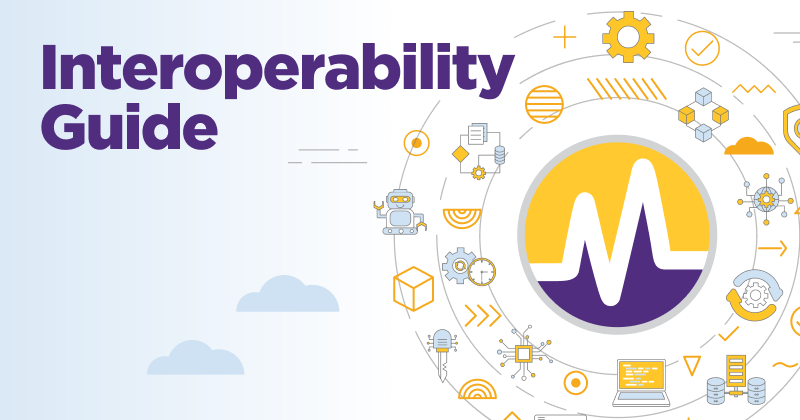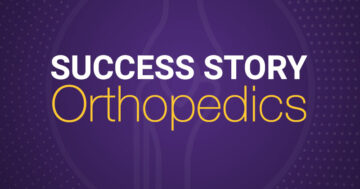A Quick Guide to Interoperability and The 21st Century Cures Act

Interoperability enhances the medical industry’s ability to share electronic health data.
As data collection and connectivity improve across healthcare, interoperability helps create and maintain seamlessness between platforms and applications.
Overall, standardization is important to optimizing any technology. While data may not be structured exactly the same from one platform to the next, conforming to certain standards allows for rapid, consistent transfers of information. Standardization enables platforms to connect and communicate, thereby enhancing interoperability.
For the healthcare industry, interoperability is also a matter of regulatory compliance. The 21st Century Cures Act, also known as the Cures Act, prohibits information blocking and requires updates to certified EHR systems (“CEHRT”).
In this blog, you can learn more about the impact of healthcare interoperability on the industry as a whole and what it may mean for you and your practice.
What Is Interoperability in Healthcare?
Interoperability in healthcare is when two or more data platforms can exchange health information and make use of information received. The continued advancement of EHRs and health information exchange (HIE) services contributes to interoperability.
As demand for healthcare services increases, the reduction of administrative taskwork — like phone calls, faxes and emails — also reduces the opportunity for human error and allows physicians and their staff to redirect their energy to patient care.
On the patient side, interoperability makes referrals and other communication easier across an episode of care and over the long run.
Benefits and Challenges of Interoperability
As the healthcare industry gets closer to achieving greater interoperability, there are a number of benefits that may be realized:
- Improved patient satisfaction – With greater connectivity, physicians may gain access to real-time patient data that allows a more comprehensive view of care and increased patient engagement.
- Increased healthcare efficiency – Eliminating time-consuming tasks may streamline coordination and delivery of care.
- Reducing cost of care – Reducing administrative effort may reduce costs at some practices and across the industry as a whole.
- Limiting staff burdens – Providers and administrators may feel less stressed and more able to focus on patients when connected applications handle tasks that are time-consuming when performed manually.
- Better protection of patient data privacy and security – With fewer humans in the loop, healthcare data may be less likely to fall into the wrong hands.
As the industry works to realize these benefits, barriers may still exist to seamless exchange of data. The use of different coding languages and different vocabulary can make transferring electronic health information complex in the early stages of interoperability.
Integrations and updates may also be time-consuming and require unique skill sets to implement if you don’t use an advanced software solution.
ModMed synapSYS as an Interoperability Solution
With ModMed synapSYS, you can connect with the larger healthcare ecosystem and advance healthcare interoperability at your own practice.
ModMed synapSYS powers data exchange between practices that use ModMed’s technology solutions and third-party applications or health systems. Our team can help you get connected through ModMed interfaces or APIs to perform tasks like retrieving and exchanging patient data, connecting to pathology and clinical laboratories, sharing data with HIEs, and more.
What Is Information Blocking?
Information blocking is when a practice is likely to interfere with sharing electronic health information.
Blocking can happen to physicians or patients, depending on the circumstances. For example, a patient may not be able to access their medical records for their own review or to share with another provider. A physician may be unable to access their patient’s records from other providers when the patient is transferring care to another location. These examples may be information blocking depending on whether an exception applies.
The 21st Century Cures Act prohibits information blocking and defines which parties are responsible for compliance with the prohibition. Both health IT developers, like ModMed, and our healthcare provider customers are subject to the rules. So are health information exchanges (HIEs)/health information networks (HINs).
Medicare and Medicaid Interoperability Requirements
Physicians who are reimbursed by the Centers for Medicare & Medicaid Services (CMS) have already been exposed to interoperability requirements as part of the Merit-Based Incentive Payment System (MIPS).
A new CMS rule related to the Cures Act also expands interoperability compliance requirements.
Value-Based Care Interoperability Scoring
Under the value-based care tenets of MIPS, payment is tied to overall quality of care rather than quantitative measures, like the number of services performed. CMS adjusts payments based on the evaluation and scoring of four key performance indicators: quality, cost, improvement activities and promoting interoperability.
In 2022, promoting interoperability will make up 25% of your score with certain factors that could change that percentage. For instance, smaller practices that don’t submit interoperability data may be weighted more heavily across other categories. An example could be if you qualify for the Small Practice Hardship and chose not to report the Promoting Interoperability category, the 25% will be reweighted to other categories so you don’t lose the opportunity to earn those points.
CMS Interoperability and Patient Access Final Rule
When ONC adopted the Cures Act Final Rule, the Centers for Medicare & Medicaid Services (CMS) adopted the Interoperability and Patient Access Final Rule, known as the CMS Final Rule.
The CMS Final Rule included additional requirements to facilitate interoperability and patient access to health information. Some new matters of compliance include that providers must add digital contact information within their National Plan and Provider Enumeration System (NPPES) listing, while hospitals have new requirements related to admission, discharge, and transfer events.
Interoperability and Your Electronic Health Record
By choosing an EHR system that includes a patient portal and integrates with other systems, you can help to promote faster, more cost-effective exchange of information.
Seamless EHR Compliance
At ModMed, we are working to implement updates that may be required to comply with the 21st Century Cures Act. This includes reviewing our interoperability solutions, road mapping software updates and deploying timely updates that maintain certified status for our CEHRT solutions.
See how ModMed can help support interoperability at your practice.


